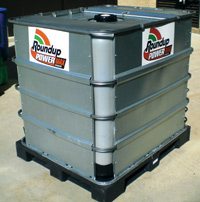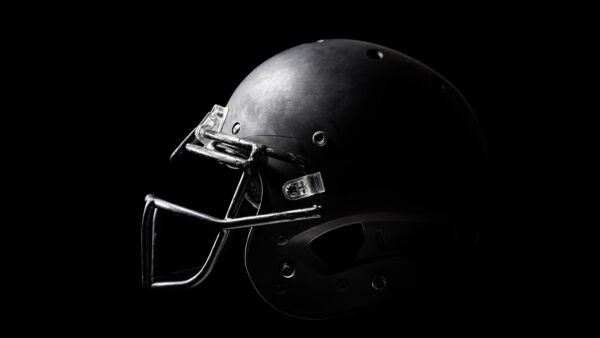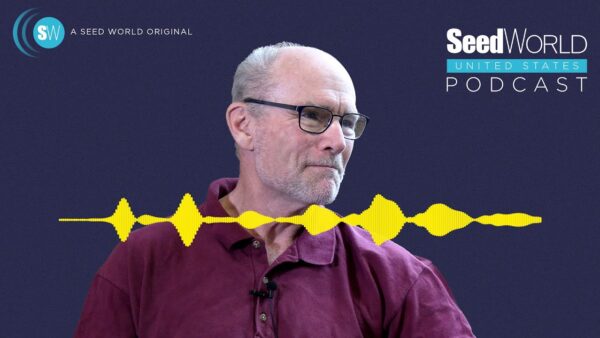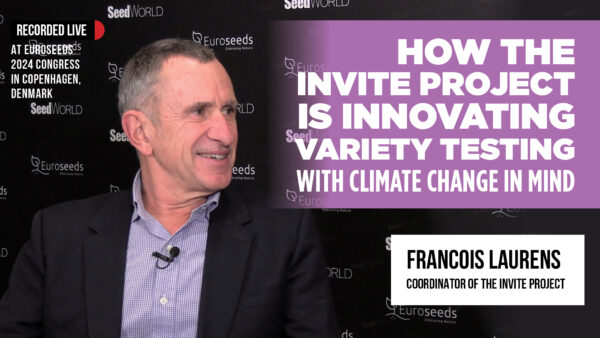In the U.S. marketplace, not all products are created equal, and seed companies must build strong brands based on consistent, high-quality performance.
It’s no accident that the logos of many of the world’s major seed companies incorporate the color green. Green can represent many things, but it has long been associated with agriculture. A universal symbol of nature, the color green symbolizes freshness, potential and new life, as well as stewardship of the environment. In short, it sums up an ideology about the world that is centered on healthy growth. And growth—in all of its various meanings—is the primary goal of seed businesses.
But companies, and their branding strategies, evolve with the times. Ten years ago, green was not as common an element of marketing materials of these same companies as it is today.
A brand is more than a logo—it encompasses a company’s identity, both in terms of how it perceives itself internally and how it is perceived in the marketplace. A company’s brand is as individual as a signature, and its equity builds over a history of strong performance.
Mick Messman, DuPont Pioneer’s director of USA product marketing, believes history has a lot to do with the strength of a brand. “I think the key thing that makes our brands so strong is the rich history we have of over 85 years dedicated to the seed business,” he says. “The Pioneer brand is one of the most recognizable and respected brands in the industry. It really reflects who we are, and celebrates where we’ve been, and it provides a clear sense of where we’re going.”
For DuPont Pioneer, a strong brand has as much to do with the consumer’s impression of their interaction with the company as a whole as it does with the physical product. DuPont boasts a localized network of sales professionals supported by technical experts who can provide management advice along with the product in question. DuPont’s goal? That the consumer knows he or she is not simply purchasing a product that will boost their bottom line—they are purchasing a commitment.
“When a customer decides to purchase a product from DuPont Pioneer, they understand the promise of quality behind that product, the commitment to research that is behind that product, the commitment of DuPont to play a key role in feeding the global population, and the honesty and fairness of how we work with our customers,” says Messman. “DuPont Pioneer has a very strong and a very positive brand image that’s been earned over time by being a reliable partner with our customers. Some of the key terms that come back to us [via market research] are words like ‘trustworthy,’ ‘fair,’ ‘respected’ and ‘likeable,’ and that’s been built by serving our customers in a way that helps them feel successful.”
It’s tough to imagine that many benefits fitting in one shopping bag. Nevertheless, a company’s ability to deliver the whole package has become essential to success in today’s tightly competitive seed industry.
“Some of the key terms that come back to us are words like ‘trustworthy,’ ‘fair,’ ‘respected’ and ‘likeable,’ and that’s been built by serving our customers in a way that helps them feel successful.” —Mick Messman
Branding Systems
Increasingly, seed, traits and chemistry are branded under “systems,” where all products related to production of a particular crop are sold under blanket brands.
Monsanto’s flagship herbicide brand system, Roundup Ready PLUS, offers growers a variety of products, agronomic advice and incentives for using herbicides—including competitors’ products—to combat weed resistance. The platform offers regionally-specific herbicide recommendations by crop type and detailed herbicide programs that can be customized based on weed pressure.
“I think what’s been critical for Monsanto to do and what we’ve done successfully is having our brand identified as part of an overall system,” says John Combest, a spokesperson for Monsanto. “We’re closely identified with the Roundup Ready system. If you have an overall system that includes both the trait and the herbicide, that means when you buy a Roundup product it’s part of the overall system, and whether you grow corn, soybeans or cotton, you have a system from Monsanto that provides proven traits, optimum yield, effective weed control and even incentives for using competitors’ products.”
Holistic systems like these offer consumers assurance that every part of the package is designed to work with every other part. The corollary is that seed, traits and crop protection products are considered parts of a whole.
Changing With the Times
Whether it’s seed or crop protection on offer, Monsanto, DuPont Pioneer and Monsanto’s Roundup Ready PLUS partners Valent and MANA Crop Protection have all evolved their branding strategies over time to meet specific consumer demands.

Brands with consumer clout may change the whole lexicon of the consumer. Photo courtesy of Monsanto. |
Valent’s product portfolio has changed quite a bit from its origins. “Our parent company, Sumitomo Chemical Company Ltd., has an extensive priming and pelleting business in international markets,” says Kevin Hammill, Valent’s vice president of ag operations and strategy. “However, several years ago we recognized that many of our powerful and innovative chemistries were needed by growers early in the season to help protect a key investment—the seed—and to deliver the potential of the crop. Starting with our acquisition of clothianidin as a platform product across several crops, Valent begin investing more heavily in research, development and acquisition of seed protection solutions, and developing multiple internal and external compounds to create the market-leading portfolio we’re continuing to build upon today.”
For Valent, the ability to continue offering innovation that changes with the times is core to the company’s success. Hammill says that customer feedback has indicated that the wave of new products and technologies coming from Valent in the past several years has given them new marketing opportunities. A steady stream of innovation, in turn, increases brand equity—as long as customers, and ultimately growers, are satisfied with the product.
An understanding of the product’s specific value, says Hammill, is key. “We believe branding philosophy starts with a fundamental understanding of the additional value our technology delivers to our customers,” he says. “Once we understand this value, we want to embrace it culturally and communicate this benefit to our customers through every touch-point possible—from the names, logos and images to training materials, presentations and customer service activities.”
From a branding perspective, Valent’s focus is to continually remind growers of the specific benefits each product delivers. “I believe most customers make initial purchase decisions of a new product based upon their perceived value of what the new technology can offer them and their crops,” he says. “So it is up to crop protection companies to make sure they are effectively communicating the brand benefits to the grower. Retailers and growers remain loyal to our Valent brands based on us consistently delivering on our brand benefit, in turn developing brand equity.”
“Most customers make initial purchase decisions of a new product
based upon their perceived value of what the new technology can offer them and their crops. So it is up to crop protection companies to make sure they are effectively communicating the brand benefits to the grower.” —Kevin Hammill
Beyond Generics
MANA Crop Protection has also evolved over time. “Originally our start in the U.S. was largely based in me-too, post-patent chemistry offerings. Today, we’re at a turning point where we’re leveraging existing chemistries to introduce more advanced formulations as well as mixture concepts,” says Sara Thieding, marketing lead for MANA.
Thieding names MANA’s new line, KlearSky Technology, as an example of the company’s latest advanced formulations to hit the market. “The KlearSky product line delivers equal or improved performance versus the current active ingredient market standards while promising a reduced impact on the environment and unique product benefits such as reduced skin sensitivity for operators and reduced odor,” she says.
MANA’s task is to continue affirming the benefits of its post-patent chemistries while also clearly branding its new, unique formulations—and wrapping them all in the company’s reputation for dependability. “From a branding standpoint we’re in the midst of an evolution, moving MANA forward and doing a better job telling our story about the brands and the unique formulations that we’re bringing to the marketplace,” says Thieding.
Not all generic or commodity products possess their own brands, but this is a priority for MANA. “Not all commodity products are created equal,” Thieding says firmly. “We at MANA pride ourselves on the quality and consistent performance of our products. We certainly stand behind our products and we’re involved in everything from formulation to packaging at our local Georgia facility. It’s not a typical generic mentality—we go above and beyond that, and we have a lot more to offer than those who simply seek to move big volumes of commodity products.”
Similarly, with regard to seed, as generic varieties increasingly enter the marketplace, strong brand equity will be key for seed companies that own the original technology.
For Monsanto, dependable brands such as Roundup have collected so much brand equity that they have changed the whole lexicon of the consumer. In the same way that most consumers refer to all tissue as “Kleenex,” even generics, growers refer to both Roundup and generic glyphosate products as “Roundup.” This carries with it both plusses and minuses for Monsanto, says Combest. On the one hand it speaks to the power of the brand, but on the other hand, it reduces the company’s market share. “I’m not sure if it’s a good thing or bad thing. Roundup is such an important part of our overall strategy to serve farmers, so we certainly remind them that Roundup brand herbicides are the top-of-the-line products,” he says.
Ultimately, however, the reliability of the brand gives it an edge against any competition. “The product works,” says Combest. “We’re known largely as a seed and traits company but we’re always researching new herbicide technologies. We commercialized glyphosate, so farmers recognize Monsanto as the experts on it.”
According to Combest, the lower price of generics might initially seem like a point in their favor, but the value of the brand is such that the cost is a side issue. It comes back to the overall strategy. Growers buying Roundup are buying it as part of a system, and participation in the system is a benefit all on its own. “Our Roundup herbicides are priced just slightly over generics, so when farmers look at a cheaper generic and then they look at something as powerful as Roundup, when we’re priced so competitively, farmers tell us it’s a pretty easy choice. In addition to that, you tie that into the overall system. When you buy Roundup herbicides, you might also participate in Roundup Ready PLUS and some other programs.”
Going forward, Roundup Ready PLUS as a branding system will be a major focus for Monsanto. And why not, says Combest, “it’s working.”
Value, Value, Value
It’s a given that successful marketing strategies begin with a belief in the quality of the product being sold. If you don’t believe in the product, why should consumers believe in it, much less buy it year after year?
When it comes to marketing seed and seed protection technology, this is particularly true. Growers, heavily invested in the success of their operations, and often heavily in debt, cannot afford to make mistakes on their fields. Profitability requires reliability. Growers buy brands they believe will stand the test of time.
Messman believes growers make purchasing decisions based on the strength of the brand. “What we’ve seen is that the customer purchases the brand, and then they purchase functionality with that. So they may be looking for insect or disease protection, but the overriding factor in that purchase decision is the brand,” he says. And what DuPont Pioneer’s brand offers them is something they feel they can trust. “I think the 80-some years of history of DuPont providing a good product—there’s a level of trust there that we’re providing that protection, whether from trait technology or treatment technology.”
Growers are savvy businesspeople, willing to pay for value. It’s up to seed and crop protection companies to provide the consistent value growers are looking for.
And in the end, it’s the level of trust that matters most to the success or failure of a brand.
Julienne Isaacs











